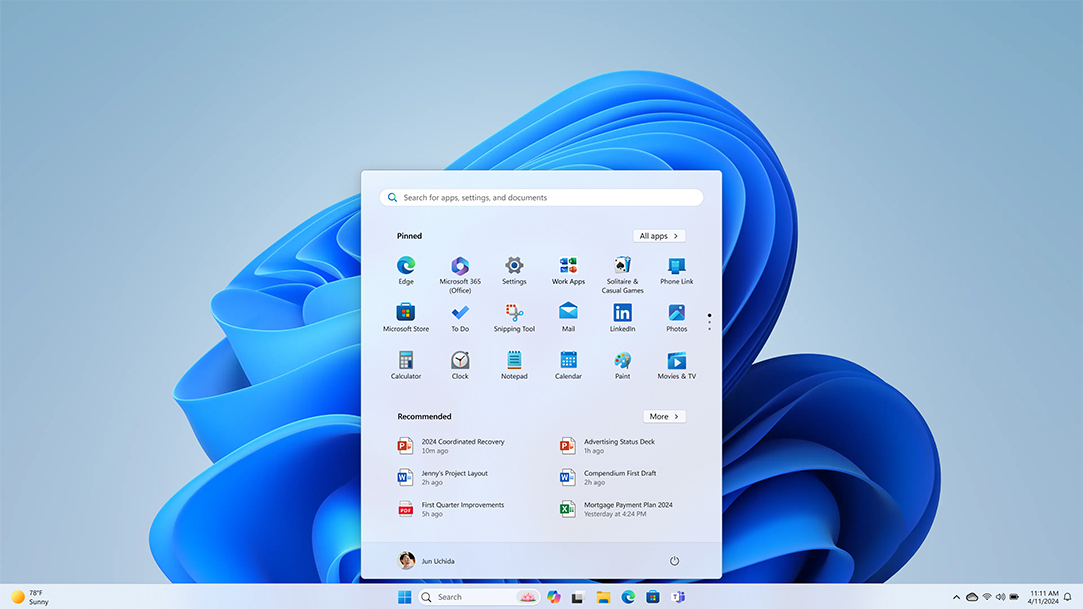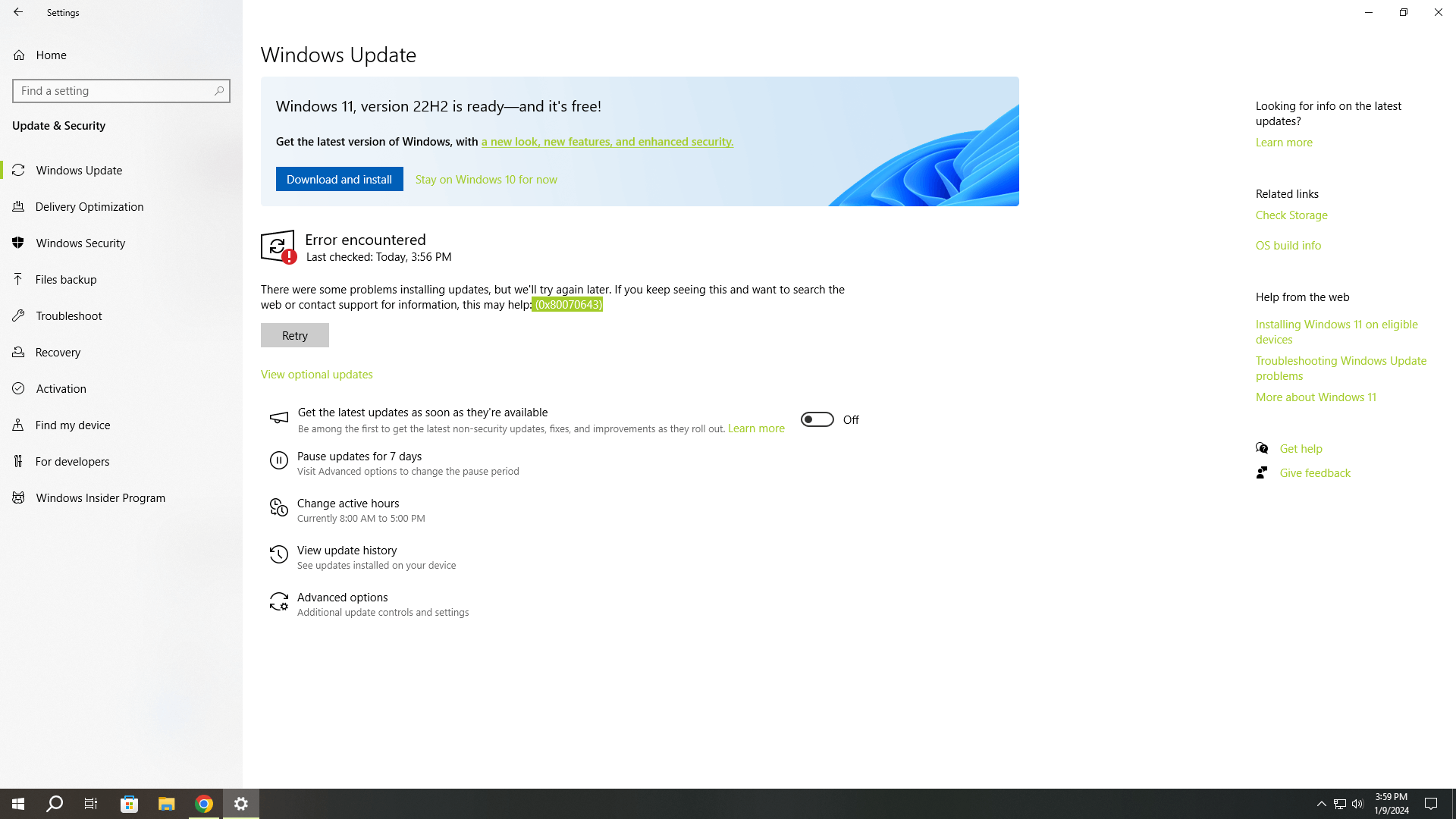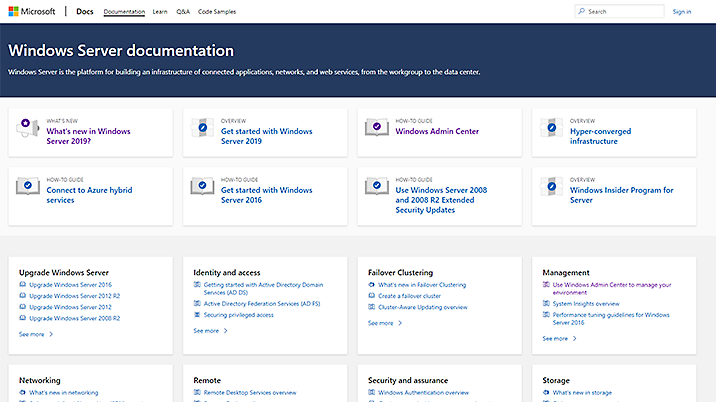The current version of Microsoft Windows Server is Windows Server 2019. This version was released in October 2018 and is the latest version of Microsoft’s server operating system.
Windows Server 2019 provides new and improved features for storage, security, networking, hyper-converged infrastructure, and hybrid cloud environments. With this version, users can enjoy enhanced flexibility, scalability, and performance for their datacenters, applications, and workloads. Administrators can also use Windows Admin Center – a web-based management tool – to manage their servers and clusters, as well as perform monitoring, troubleshooting, and automation tasks.
Additionally, Windows Server 2019 offers extended support and updates until the year 2029, enabling businesses to maximize their investments in this platform and stay up-to-date with the latest security and compliance standards.
Explore The Windows Server
Microsoft Windows Server is an operating system that is utilized by businesses to manage and run various server services. At present, the latest version of this software is Windows Server 2019, which offers several features and improvements over its predecessors.
Microsoft Windows Server is a popular operating system designed to help individuals and businesses manage their servers. The most recent version of Windows Server is the Windows Server 2022. This article will explore the latest features of Windows Server 2022 and compare it with the previous versions.
Windows Server 2022 Overview
The Windows Server 2022 comes with several new features and improvements over the previous versions. Some of the key improvements include:
- Improved security features, including secured-core server and hardware-based zero-trust technology.
- New hybrid capabilities that help organizations integrate their on-premises infrastructure with Azure services.
- Improved application performance and scalability through new containerization features.
- Enhanced server management tools.
Key Features of Windows Server 2022
The latest version of Windows Server comes with new features that help businesses manage their servers more efficiently. Some of the key features include:
| Feature | Description |
| Secured-core server | Hardware-based zero-trust technology that helps protect servers from threats. |
| Hybrid capabilities | Connectivity to Azure services for additional backup and storage options. |
| Containerization features | Enables efficient management of applications across multiple environments. |
| Server management tools | Tools for centralized management of servers, including servers in remote locations. |
Comparison With Previous Versions
Windows Server 2022 offers significant improvements over the previous versions such as Windows Server 2019 and 2016. The latest version provides enhanced hybrid capabilities, stronger security features, and better server management tools. Moreover, the containerization feature helps organizations to manage their applications more efficiently.

Credit: www.microsoft.com
Top Upgraded Features
Microsoft has released the latest version of Windows Server, Windows Server 2022. This version is packed with new features and improvements to help organizations modernize their infrastructure.
Enhanced Security And Performance Features
- Hybrid Architecture: Windows Server 2022 provides support for hybrid environments, which allows organizations to manage their resources across on-premises, cloud, and edge environments seamlessly.
- Storage Migration Service: This feature makes it easy for organizations to migrate their data from old servers to new servers with minimal downtime.
- Windows Admin Center: The Windows Admin Center is a browser-based tool that provides a unified, modern management experience for Windows Server environments.
- DNS-over-HTTPS (DoH): This feature encrypts the DNS traffic between the client and the DNS server, providing better security.
The enhanced security and performance features of Windows Server 2022 make it an ideal choice for organizations that want to modernize their infrastructure while ensuring the safety and security of their data.
Migration And Upgradation Guide
Upgrading and migrating from an older version of Windows Server to the latest version can seem daunting, but with proper preparation and planning, it can be a smooth process. Here is a preparation checklist to ensure a successful migration:
| Step | Description |
| Backup | Create a full backup of all servers and databases to be migrated. |
| Hardware Compatibility | Ensure that all hardware is compatible with the new version of Windows Server |
| Software Compatibility | Ensure that all applications to be migrated are compatible with the new version of Windows Server |
| Storage Capacity | Ensure that storage space is sufficient for the new version of Windows Server |
| Licenses | Ensure that all licenses required for the new version of Windows Server are available and valid |
Once you have completed the preparation checklist, follow these steps for installation and configuration:
- Insert the installation media and boot the server.
- Follow the prompts to install the new version of Windows Server.
- Configure the server settings as required.
- Install any necessary updates and patches.
After installation, perform post-deployment testing and verification to ensure that the server is functioning properly:
- Connect to the server and ensure that all services and applications are running as expected.
- Perform load testing to verify server capacity.
- Test backup and recovery procedures.
During migration, problems may arise. Here are some common migration issues and troubleshooting tips:
- Application compatibility issues: Test applications in a non-production environment and contact support for assistance.
- Hardware compatibility issues: Check for driver updates and contact hardware vendors for assistance.
- Data loss or corruption: Ensure that backups are up-to-date and perform data recovery.

Credit: answers.microsoft.com
Third-party Tools And Integration
Microsoft Windows Server has become a popular choice for businesses of all sizes. One of the key benefits of the server is its ability to integrate with Azure, which makes it a great choice for organizations that want to take advantage of the benefits of cloud computing.
In addition to Azure integration, there are several third-party tools that can help with performance monitoring, backup and restore solutions, and compliance with regulatory frameworks. Some popular performance monitoring tools for Windows Server include Microsoft System Center Operations Manager and PRTG Network Monitor. Veeam Backup and Recovery and Acronis Backup and Recovery are popular backup and restore solutions.
Microsoft Windows Server also has built-in features for compliance and regulatory frameworks such as Windows Server Update Services and Group Policy Management. These tools can help businesses stay compliant with regulations such as HIPAA, PCI DSS, and GDPR.
| Tools for Performance Monitoring | Backup and Restore Solutions | Compliance and Regulatory Framework |
|---|---|---|
| Microsoft System Center Operations Manager | Veeam Backup and Recovery | Windows Server Update Services |
| PRTG Network Monitor | Acronis Backup and Recovery | Group Policy Management |
Future Roadmap For Windows Server
Microsoft’s long-term vision for Windows Server continues to focus on enhancing security features and improving the overall user experience. With new trends and technologies emerging every year, Microsoft strives to stay ahead of the curve by continually adding new features and enhancements to Windows Server.
New Trends And Technologies
Windows Server aims to keep up with the latest technology trends and advancements, such as cloud computing, artificial intelligence, and the internet of things. The latest version of Windows Server also emphasizes containerization and microservices for more efficient and scalable applications.
Upcoming Features And Enhancements
One of the most anticipated upcoming features is Azure Arc, which will allow users to manage and monitor servers and applications across multiple cloud platforms. Microsoft is also working on improving the File Server experience and adding new capabilities to Windows Admin Center for easier server management.
| Version | Release Date | Features |
|---|---|---|
| Windows Server 2019 | October 2018 | Improved security features, hybrid cloud capabilities, and containerization |
| Windows Server 2022 | TBD | Improved Azure integration, enhanced security, and improved File Server experience |

Credit: www.microsoft.com
Frequently Asked Questions Of What Is The Current Version Of Microsoft Windows Server
What Is The Latest Version Of Microsoft Server?
The latest version of Microsoft server is Windows Server 2019.
What Is Windows Server 23h2?
Windows Server 2022 is the latest version of the Windows Server operating system. It comes with advanced security features, hybrid capabilities, and new tools for developers. It also includes support for containers, Kubernetes, and Edge computing.
Is Windows Server 2016 Still Supported?
Yes, Windows Server 2016 is still supported. However, there is a timeline for the end of mainstream and extended support: mainstream support will end on January 11, 2022, while extended support will end on January 12, 2027.
Is Windows Server 2012 R2 Still Supported?
Yes, Windows Server 2012 R2 is still supported but will reach its end of support on October 10, 2023. Microsoft encourages users to upgrade to a newer version of Windows Server to ensure security updates and technical support.
Conclusion
Microsoft Windows Server has come a long way since its initial release. The current version, Windows Server 2019, offers powerful and innovative features that enhance its performance, security, and management. Keeping your server up-to-date is crucial to ensure optimal performance and protection against security vulnerabilities.
With the right knowledge and resources, upgrading to the latest version of Windows Server can be a smooth and streamlined process. Stay ahead of the game and take advantage of all that Windows Server has to offer.